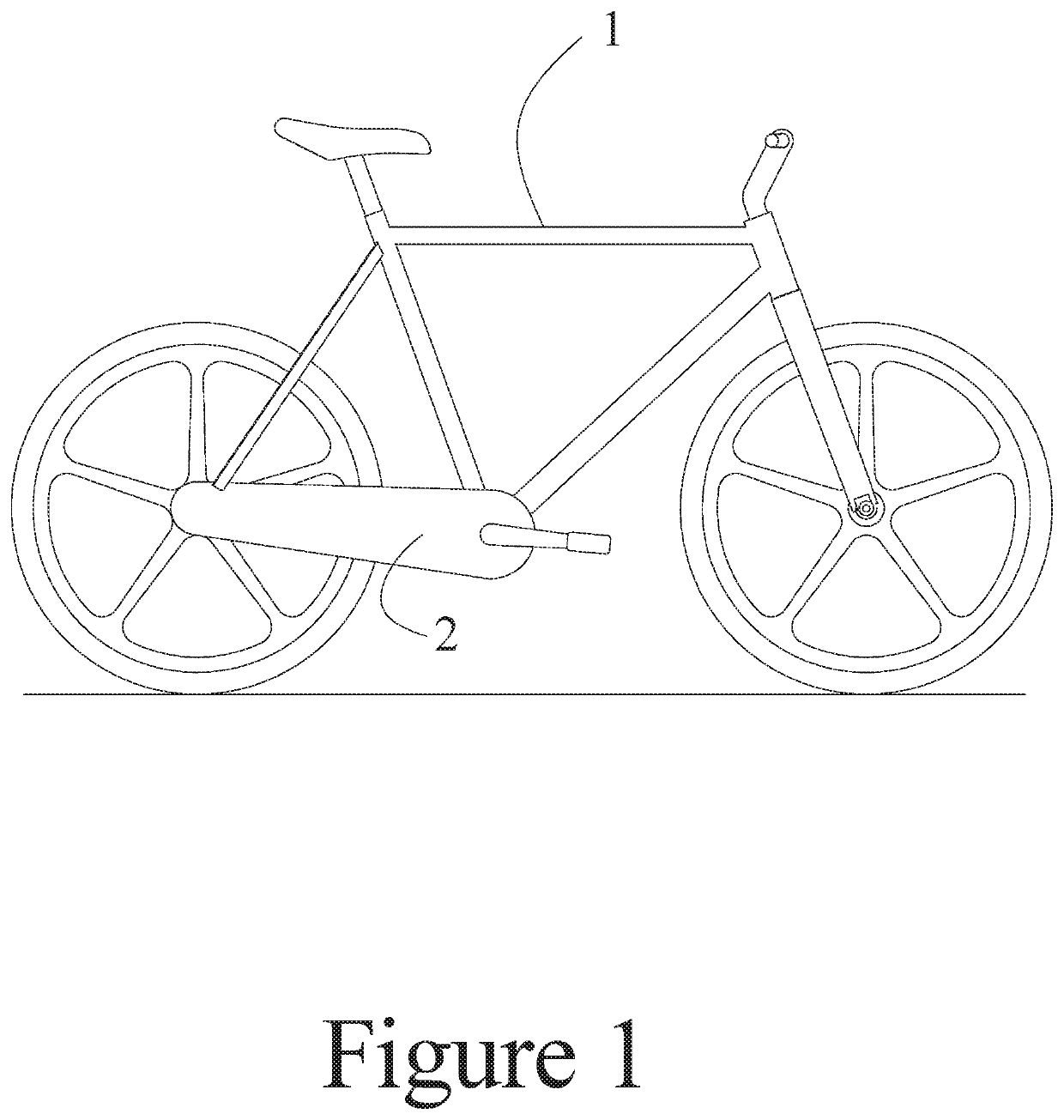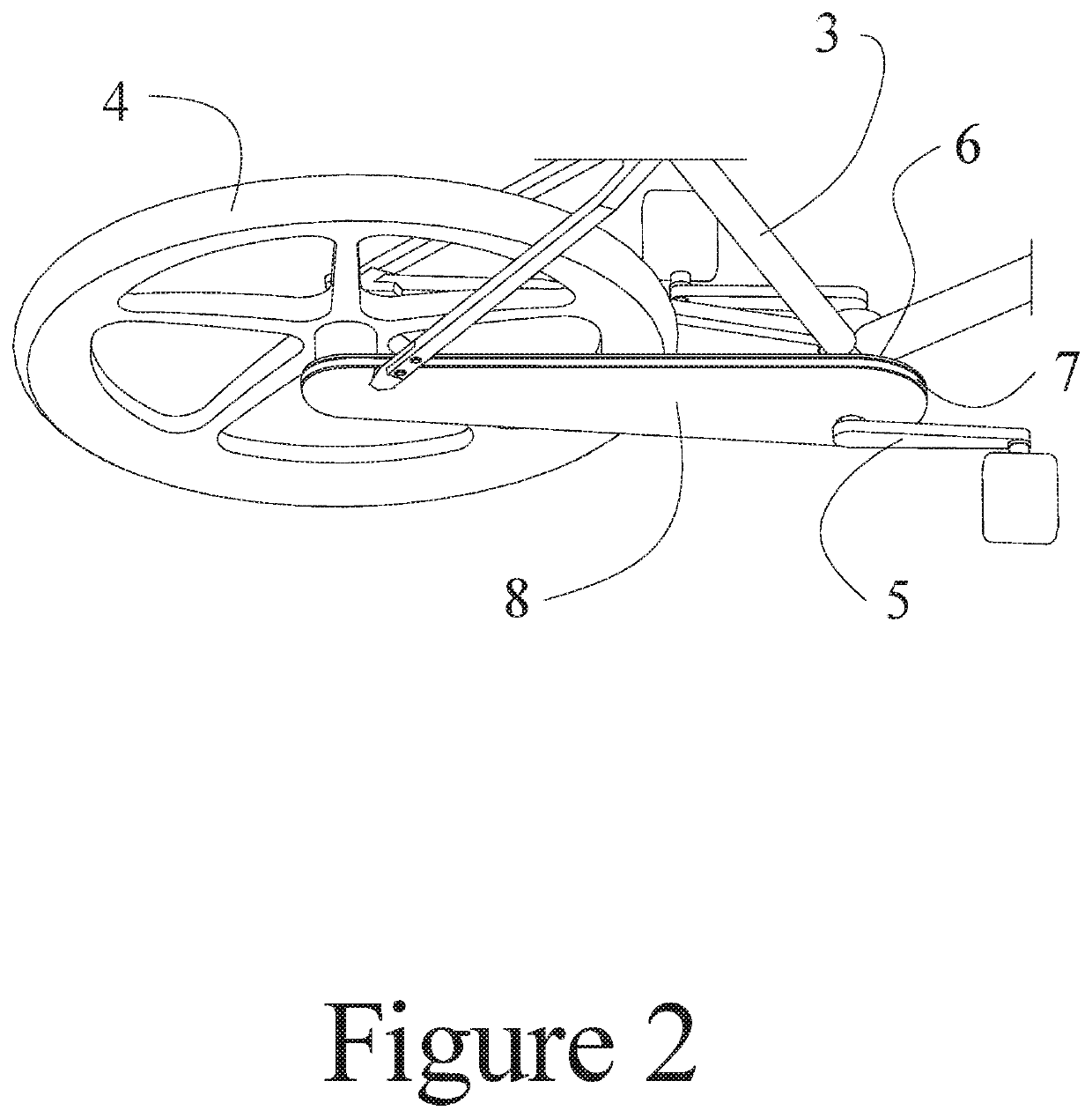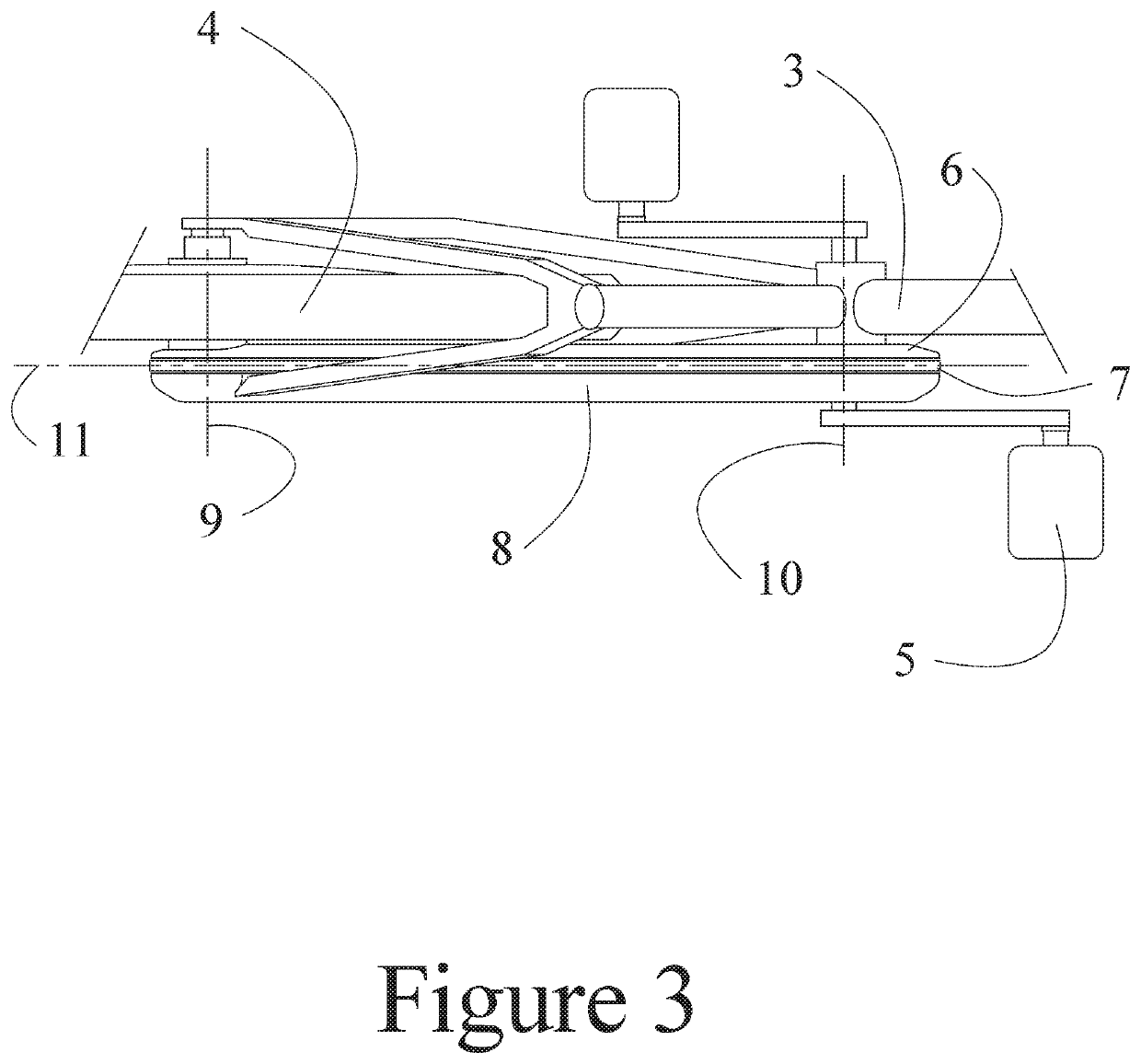Belt Driven Pedal Cycle Employing a Slim Protective Belt Drive Cover
a pedal cycle and drive cover technology, applied in guards, bicycle equipment, transportation and packaging, etc., can solve the problems of reducing lubrication, requiring oil lubrication to run efficiently, and reducing lubrication, so as to improve the prevention of riding clothing and reduce the cost
- Summary
- Abstract
- Description
- Claims
- Application Information
AI Technical Summary
Benefits of technology
Problems solved by technology
Method used
Image
Examples
Embodiment Construction
[0031]FIG. 1 shows a first embodiment comprising a belt driven pedal cycle 1 and a slim protective belt drive cover 2.
[0032]As shown in the perspective view of FIG. 2, the illustrated embodiment comprises a bicycle frame 3 fitted with a rear hub wheel assembly 4, a pedal crank assembly 5, an inner belt cover 6, an outer belt cover 8 and a belt drive 7 such that power rotatably input through pedal crank assembly 5 is transmittable to rear hub wheel assembly 4 through belt drive 7. Inner belt cover 6 and outer belt cover 8 may be made from materials such as plastic, metals, or composites and could be manufactured through injection moulding, forming, or other pressure type moulding processes for example. Inner belt cover 6 and outer belt cover 8 are not essential for the structural integrity of bicycle frame 3 in the embodiment presented in FIG. 2.
[0033]As shown in FIG. 3, the illustrated embodiment comprises a bicycle frame 3 fitted with a rear hub wheel assembly 4 rotatable about a r...
PUM
 Login to View More
Login to View More Abstract
Description
Claims
Application Information
 Login to View More
Login to View More - R&D
- Intellectual Property
- Life Sciences
- Materials
- Tech Scout
- Unparalleled Data Quality
- Higher Quality Content
- 60% Fewer Hallucinations
Browse by: Latest US Patents, China's latest patents, Technical Efficacy Thesaurus, Application Domain, Technology Topic, Popular Technical Reports.
© 2025 PatSnap. All rights reserved.Legal|Privacy policy|Modern Slavery Act Transparency Statement|Sitemap|About US| Contact US: help@patsnap.com



